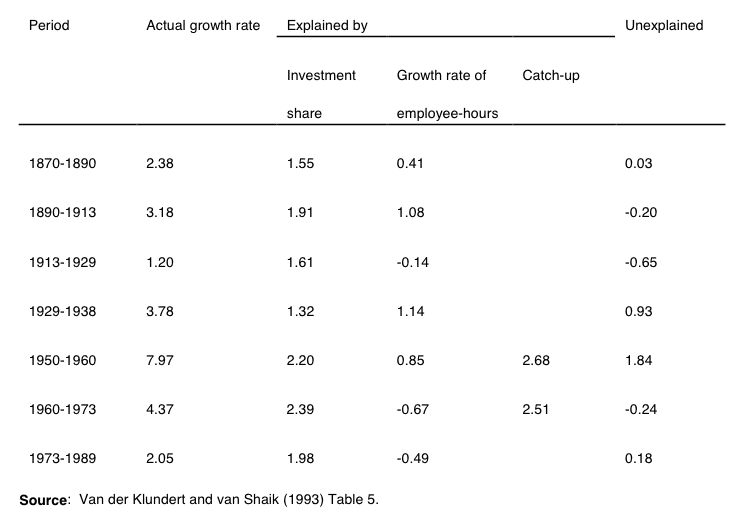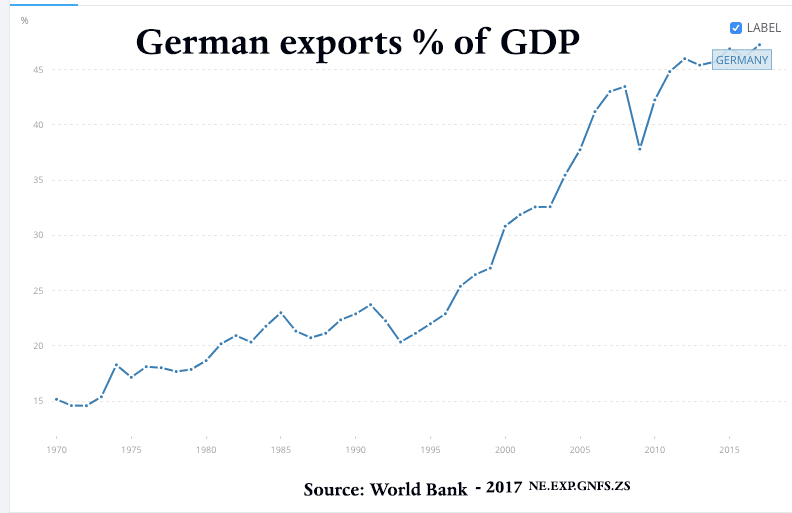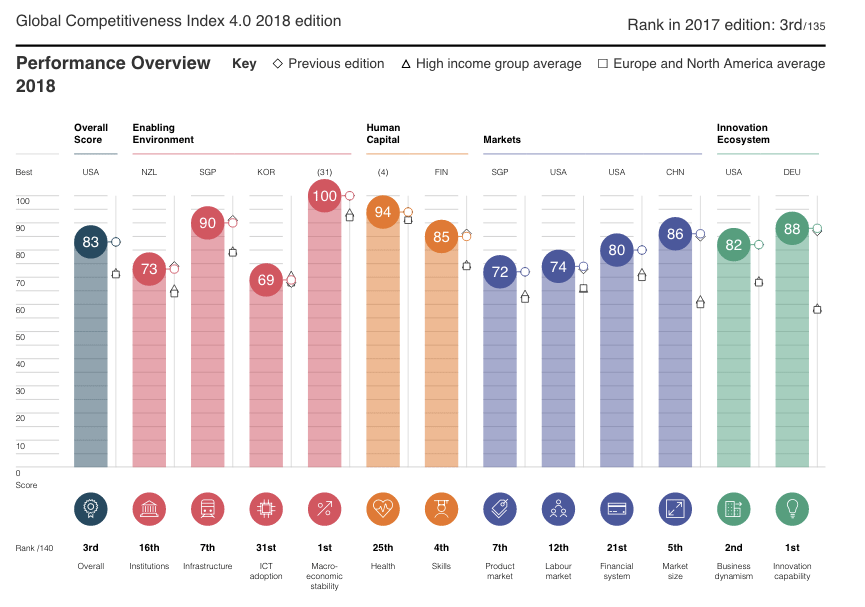Readers Question – what explains the strength of the German economy post-war?
In the aftermath of the Second World War, the German economy was devastated by years of war, price controls, rationing and the loss of patents and top scientists to the US. However, by 1950, the economy was transformed by investment, economic growth and an economic transformation that is referred to as Wirtschaftswunder – the ‘economic miracle.’
Causes of the post-war boom
Social market economy. In 1948, food and goods were scarce, and a barter economy was prevalent. However, in 1948, there was a successful deregulation of prices and return to a market economy. In Germany, the new structure became known as Ordoliberalism – structured order. A mix of free market forces with consideration of human/social element.
Marshall Plan. From 1948, West Germany received funds under the Marshall Plan. This amounted to $2 billion up to October 1954 – this was only 5% of the German economy (econ lib), but was still of significance both economically and psychologically. The German economy also received considerable spending from Allied troops stationed in West Germany. However, other countries were also recipients of Marshall Aid and th
Mechanisation. Increased mechanisation in agriculture allowed workers and capital to switch to industry. Given low output and low productivity, there was substantial scope for productivity gains and economic growth as West Germany caught up with economies like UK and France. A small investment made big improvement in productivity.
Catch up effect. Up until 1973, the faster rate of economic growth in West Germany can partly be attributed to the ‘catch up effect’ as Germany was starting from a lower point of GDP.
Reasons for growth in West Germany

High capital investment. In the post-war period, the West German economy supported a high rate of capital investment, this was enabled through high savings/low consumption and low levels of replacement needed The high capital investment was also a reflection of the determination to focus on economic recovery, business and hard work as an alternative to the past history of Germany.
State investment. In 1950s and 60s, high economic growth and rising real incomes encouraged the state to invest in public infrastructure – roads, trains, schools and social welfare net. This boosted infrastructure – important for an economy based on trade.
Trade and exports. The German economy is geared towards exports. It has benefitted from free trade and the role of the European Union in reducing friction to trade. In recent years, trade has become even more important. According to the World Bank, Exports of goods and services in Germany accounts for 47% of GDP in 2011 (World Bank). In particular, Germany has specialised in complex and high value manufacturing exports – which has enabled Germany to retain a competitive advantage over lower labour cost manufacturing countries in Asia.

Migration. In the post-war boom, strong economic growth was helped by high levels of migration The number of persons employed in West Germany rose from 13.8 million in 1950 to 19.8 million in 1960. (link) The unemployment rate fell from 10.3% to 1.2%. (1950-1960) High migration enabled an elastic labour supply and so high economic growth didn’t cause supply constraints. In the post-war period, this was often ethnic Germans displaced from former other countries. In particular, West Germany benefitted from a migration of labour from East Germany – though this was halted with Berlin wall in 1961. In recent years, it has been increasingly migrants from further afield, such as Turkey, Russia, Poland and Romania.
Worth Ethic. Max Weber wrote about the Protestant work ethic in 1904. In the post-war period, hard work was an outlet for a defeated nation coming to terms with its past. This may be contrasted with complacency amongst UK, France. Interestingly, the number of hours worked by Germans is not particularly high. According to the TUC, German workers take twice as many as many sick days per year as UK workers. There is an effort to keep the balance between work and leisure. But in work, there is an expectation of “Zeit ist Geld” – workers are expected to be quick and effective. Not so much as staying at your office all hours, but achieving more whilst at work.
Trade unions and relations with business. In the post-war period, unions were designed to be large, non-political organisations – rather than confrontational. This could be compared to industrial relations in the UK, where poor relationships between unions and business led to frequent strikes and disruptions to business.
Structure of business in Germany. Business funded by long-term bank investment, less reliance on the stock market – which can encourage a short-termism. Between 95 and 99 per cent of all German companies belong to the German “Mittelstand,” (link) small and medium-sized enterprises, which are mostly family-owned.
“The German Mittelstand doesn’t look at quarterly figures, but thinks in generations.”
Fabian Wehnert, German Industry Association (link)
These family businesses are geared towards longer term – generational planning, rather than being subject to more short-term pressures of a publically listed company.
Education and training. In Germany, there is greater value placed on vocational training. At schools, work experience and vocational training is encouraged as an option. There is also a greater scope for workers to continue with education and training throughout their working life.
Role of Bundesbank The Deutsche Bundesbank was set up in 1957 with a remit to control inflation. Memories of Weimar hyperinflation crisis have remained strong in Germany, creating a strong resistance to allowing any kind of creeping inflation. The Bundesbank has created a reputation for low inflation. This macroeconomic target has been made easier by productivity gains in the economy, which leads to a low structural rate of inflation.
Euro has improved competitiveness. Since the Euro was launched in 2000, the German economy has seen a relative improvement in competitiveness compared to southern Eurozone economies.
Labour costs have risen slower in Germany than elsewhere but there has been no appreciation in German currency like before Eurozone. This competitive advantage is reflected in current account surplus (arguably this surplus creates problems for rest of Eurozone)
Modern strengths of Germany

1st in global innovation capability
Weaknesses
Whilst the German economy has many strengths it is worth mentioning in brief certain weaknesses
- Stubborn unemployment – especially in East Germany. In 2014, unemployment in East Germany was 9%; in West Germany 5.4%. Factors blamed include high welfare payments, structural unemployment
- Public infrastructure investment stalling in recent years due to austerity and reluctance to invest.
- Germany has been criticised for benefitting from undervalued currency in the Euro – leading to structural imbalances within the Eurozone.
- An unnecessary austerity has held back economic growth in Europe.
Related

I study the economy and economic development of Germany. Your article is a great find for me, it has so much useful information, thanks for sharing!